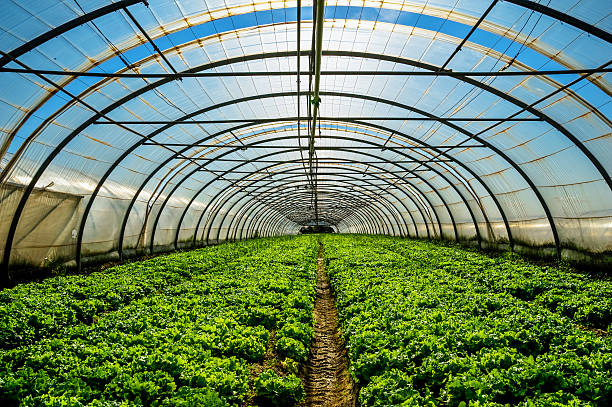Greenhouse Layout: Producing an Eco-Friendly Expanding Space
Find out how to develop a greenhouse that makes best use of natural light, conserves water, and integrates sustainable power sources. By picking sustainable materials and executing energy-efficient home heating and cooling down systems, you can produce a greenhouse that is both environmentally conscious and effective.
Selecting Lasting Products
When developing your green greenhouse, focus on sustainability by carefully choosing materials that are environmentally-friendly and promote energy performance. Among one of the most vital aspects of developing an environmentally friendly greenhouse is selecting sustainable materials. By selecting products that have a marginal influence on the environment, you can lower your carbon impact and add to a much more sustainable future.
Start by considering the materials used for the framework of your greenhouse. Seek alternatives such as sustainably gathered wood or recycled materials. These selections not just minimize the demand for new sources yet likewise prevent waste from finishing up in land fills. Furthermore, think about using products that have a high thermal mass, such as stone or concrete, as they can help manage the temperature level inside the greenhouse, minimizing the requirement for excessive home heating or air conditioning.
An additional essential variable to think about is the glazing product for your greenhouse. Pick materials that give exceptional insulation residential properties, such as double- or triple-pane glass or polycarbonate panels. These products can help catch heat inside the greenhouse, minimizing the amount of power needed for heating throughout colder months.
In addition, when selecting materials for the interior of your greenhouse, choose sustainable alternatives such as bamboo or recovered timber for shelving and benches. These products are not only resilient yet also promote the liable use of resources.
Optimizing Natural Light
To maximize natural light in your environment-friendly greenhouse, focus on the strategic placement of skylights and home windows to optimize sunlight exposure throughout the day. This is an essential consider developing an ideal growing atmosphere for your plants. When picking the placement of windows, consider the path of the sun throughout the day and exactly how it will certainly impact the various locations of your greenhouse. South-facing home windows will certainly obtain the most sunshine, while east-facing home windows will certainly capture the morning sun and west-facing windows will receive the afternoon sunlight. By strategically placing windows on these sides, you can ensure a consistent and even distribution of sunlight throughout the day.
Skylights are another reliable method to optimize all-natural light. They enable sunshine to enter from above, offering an added resource of light for your plants. When mounting skylights, consider their dimension and setting. Larger skylights will certainly enable more light to get in, however ensure they are not also large that they cause too much warmth or glare. Position them in locations where they can give direct sunlight to your plants without casting shadows on other locations.
Carrying Out Energy-Efficient Cooling And Heating Equipments
To further enhance the power effectiveness of your green greenhouse, think about applying energy-efficient heating and cooling systems. These systems play an important duty in Homepage maintaining ideal temperature level and humidity degrees for your plants, while decreasing energy intake and reducing your greenhouse's carbon footprint.

This permits for the exchange of fresh air and assists control the temperature inside the greenhouse. These systems use much less power contrasted to typical air conditioning devices and can successfully lower the temperature level inside the greenhouse.
Water Preservation Methods
To further boost the power performance of your green greenhouse and continue reducing its ecological effect, it is very important to apply efficient water preservation methods. Water is a precious source, and with the best strategies, you can minimize your greenhouse's water consumption while still giving ideal problems for your plants.
One means to save water is by using a drip watering system. This method supplies water directly to the plant origins, minimizing dissipation and making sure that water goes where it is needed most. Furthermore, setting up a rain harvesting system can assist catch and store rain for later usage in your greenhouse. This not only minimizes your reliance on municipal water sources but also conserves you money in the future.
An additional technique is to mulch your plants. Including a layer of organic material around the base of your plants aids retain wetness in the dirt, reducing the requirement for regular watering. In addition, think about making use of a water-efficient potting mix that keeps wetness while still giving adequate drain.
Finally, check your greenhouse's water use on a regular basis. By keeping track of just how much water you are utilizing, you can determine locations for renovation and make essential adjustments.
Incorporating Renewable Energy Sources

Verdict
Finally, by executing lasting materials, optimizing all-natural light, making use of energy-efficient heating and cooling systems, practicing water conservation methods, and including renewable energy sources, you can produce an eco-friendly greenhouse design. This will not only benefit the atmosphere however likewise advertise healthy and balanced and lasting plant development. So, proceed and make a favorable influence on the earth by designing an eco-friendly growing space.
When designing your green greenhouse, prioritize sustainability by thoroughly choosing products that are environmentally-friendly and advertise power performance. These products can assist catch warm inside the greenhouse, reducing the quantity of power needed for heating throughout cooler months.
These systems utilize less energy contrasted to standard air conditioning devices and can properly decrease the temperature inside the greenhouse.
You can integrate sustainable power resources right into your greenhouse design to make it a lot more sustainable and eco-friendly.In conclusion, by carrying out sustainable materials, maximizing all-natural light, making use of energy-efficient home heating and cooling down systems, exercising water preservation methods, and including sustainable energy check out here sources, you can create an environmentally friendly greenhouse design.